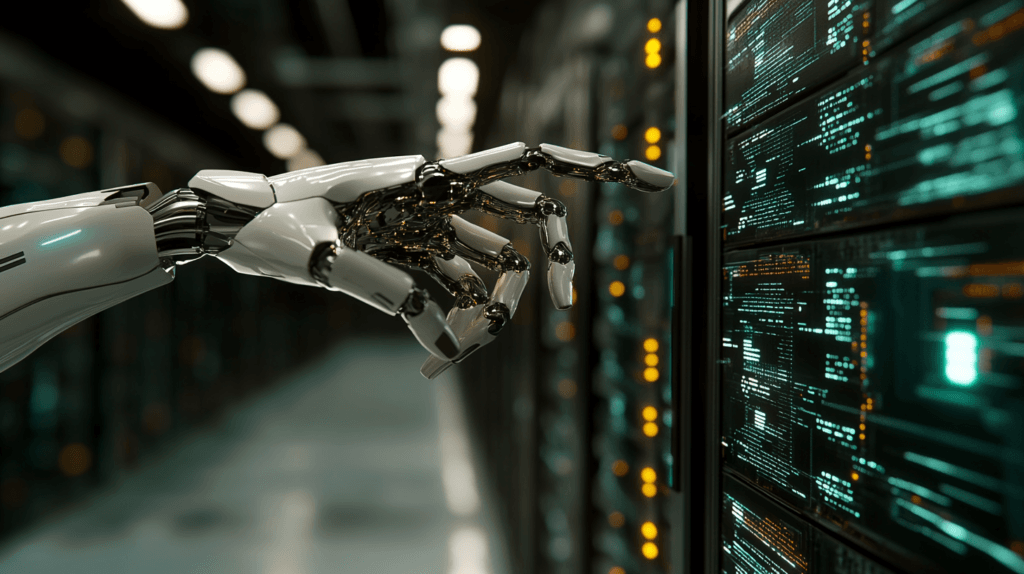AI-Powered Cybersecurity Threats: Protecting Yourself from the Latest Risks
Artificial intelligence (AI) is rapidly transforming our world, offering incredible benefits in various fields. However, this powerful technology is also being exploited by cybercriminals to launch more sophisticated and damaging attacks. Understanding these AI-powered threats is crucial for individuals and organizations to protect themselves in the evolving digital landscape.
How AI is Weaponized by Cybercriminals:
- Automated Attacks: AI can automate various stages of a cyberattack, from identifying vulnerabilities to launching attacks and evading detection. This allows attackers to operate at a larger scale and with greater speed.
- Enhanced Phishing: AI-powered phishing attacks utilize natural language processing (NLP) to create highly convincing and personalized emails, messages, or even voice calls, making it harder for individuals to identify scams.
- Malware Evolution: AI can be used to develop malware that adapts and evolves to evade traditional security measures. This polymorphic malware can change its code and behavior, making it difficult to detect and neutralize.
- Deepfakes and Social Engineering: AI-powered deepfakes can create highly realistic fake videos or audio recordings, which can be used for social engineering attacks, manipulating individuals into revealing sensitive information or performing actions that benefit the attacker.
- Exploiting Vulnerabilities: AI algorithms can analyze vast amounts of data to identify vulnerabilities in systems and networks, allowing attackers to exploit these weaknesses for malicious purposes.

Specific Examples of AI-Powered Cyberattacks:
- AI-Driven Phishing: Imagine receiving an email that appears to be from your bank, personalized with your name and recent transaction details, urging you to click on a link to update your account information. This could be an AI-generated phishing email designed to steal your credentials.
- Adaptive Malware: Malware that uses AI to learn and adapt to its environment can bypass traditional antivirus software by constantly changing its signature and behavior.
- Deepfake CEO Scam: A deepfake video of a company CEO instructing an employee to transfer funds to a fraudulent account could be used to carry out a sophisticated social engineering attack.
Protecting Yourself from AI-Powered Threats:
- Stay Informed: Keep up-to-date on the latest cybersecurity threats and trends, including AI-powered attacks.
- Enhance Security Awareness: Be cautious of suspicious emails, messages, or phone calls, even if they appear to be from trusted sources. Verify the sender’s identity before clicking on links or providing personal information.
- Strengthen Passwords: Use strong, unique passwords for all your accounts and enable multi-factor authentication whenever possible.
- Update Software Regularly: Keep your operating system, applications, and security software updated to patch vulnerabilities and protect against known threats.
- Invest in Advanced Security Solutions: Consider using AI-powered security tools that can detect and respond to evolving threats in real-time.
- Be Wary of Deepfakes: Be critical of online content, especially videos or audio recordings, and be aware that deepfakes can be used to spread misinformation or manipulate individuals.
- Educate Yourself and Others: Share information about AI-powered threats with family, friends, and colleagues to raise awareness and promote cybersecurity best practices.

The Future of AI in Cybersecurity:
While AI poses new challenges for cybersecurity, it also offers promising solutions. AI-powered security tools can analyze vast amounts of data to identify and respond to threats more effectively than traditional methods. These tools can detect anomalies, predict attacks, and automate security tasks, helping organizations stay ahead of cybercriminals.
Key Takeaways:
- AI is being used by cybercriminals to launch more sophisticated and damaging attacks.
- Individuals and organizations need to be aware of these threats and take steps to protect themselves.
- Staying informed, enhancing security awareness, and investing in advanced security solutions are crucial for mitigating AI-powered risks.
- AI also offers promising solutions for cybersecurity, and AI-powered security tools can help organizations defend against evolving threats.
By understanding the evolving landscape of AI-powered cybersecurity threats and taking proactive measures to protect themselves, individuals and organizations can navigate the digital world more safely and confidently.




No Comment! Be the first one.